Turning three was a turning point for Bergen in terms of his outdoor activity. I officially traded his “toddler” status to “preschooler”, and his stamina and physical ability grew significantly. Over the course of the last year (he’s now 4 years old), it’s been fun to observe the types of things that he is intrigued by and the way he interacts with nature when we’re on the trail. Things that I thought he’d love, don’t turn out to be as engaging as I thought, and then I’m surprised when something completely random fascinates or captivates him.
Given the chance, preschoolers can rack up the miles and can go much further than they could as toddlers, but that doesn’t mean it’s always easy to keep them moving along or interested. I recently started jotting down the things that work for Bergen–the little tricks that keep him involved, motivated, and content on the trail. They are ideas you might consider to enrich your walk, and make deeper connections with both your child and the natural world.
My hope is that they might help other preschoolers to have happy and exciting hiking experiences! The list is only 8 items long (so far) and each is quite simple, but I’m expecting the list to grow as we continue our second “preschool” year. I would love for you to add your ideas too!
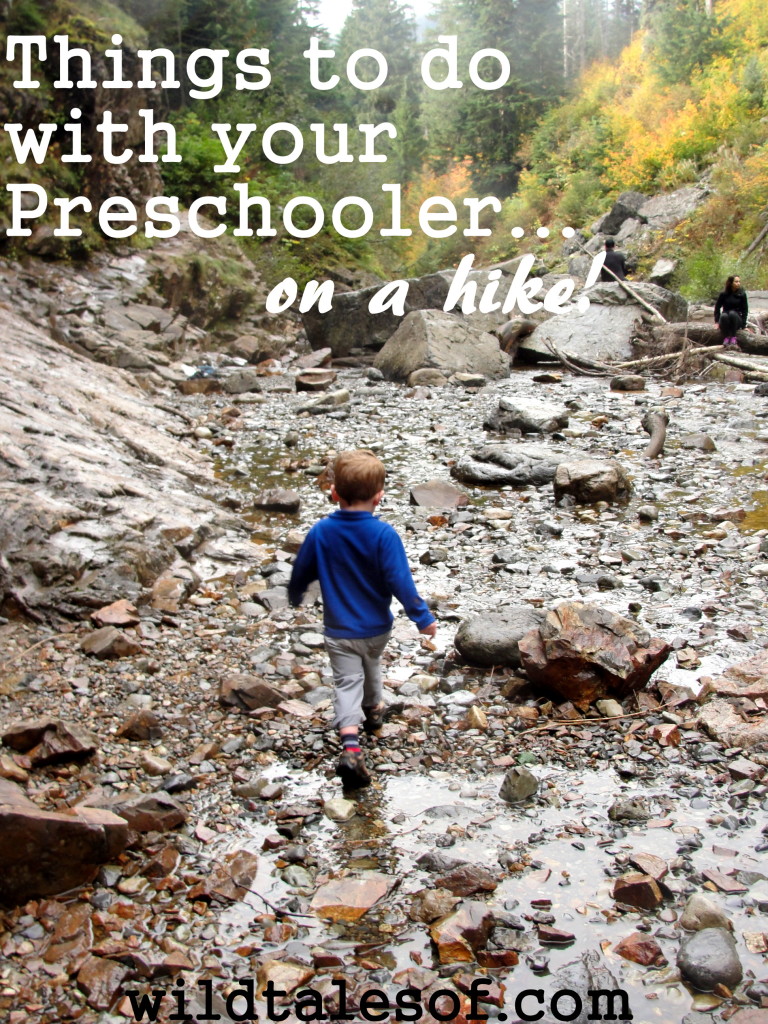
1. Count.
“I wonder how many…(snails, slugs, leaves, acorns, types of flowers, types of trees, types of cactus) we can find!” I could go on and on, and so could Bergen! He loves to count and keep track of certain items as we hike. You might make a plan as motivation before you start your hike, or just come up with something as you go along. And it’s amazing how it can keep Bergen moving when I say, “Let’s go and try to find another…(fill in blank)”.
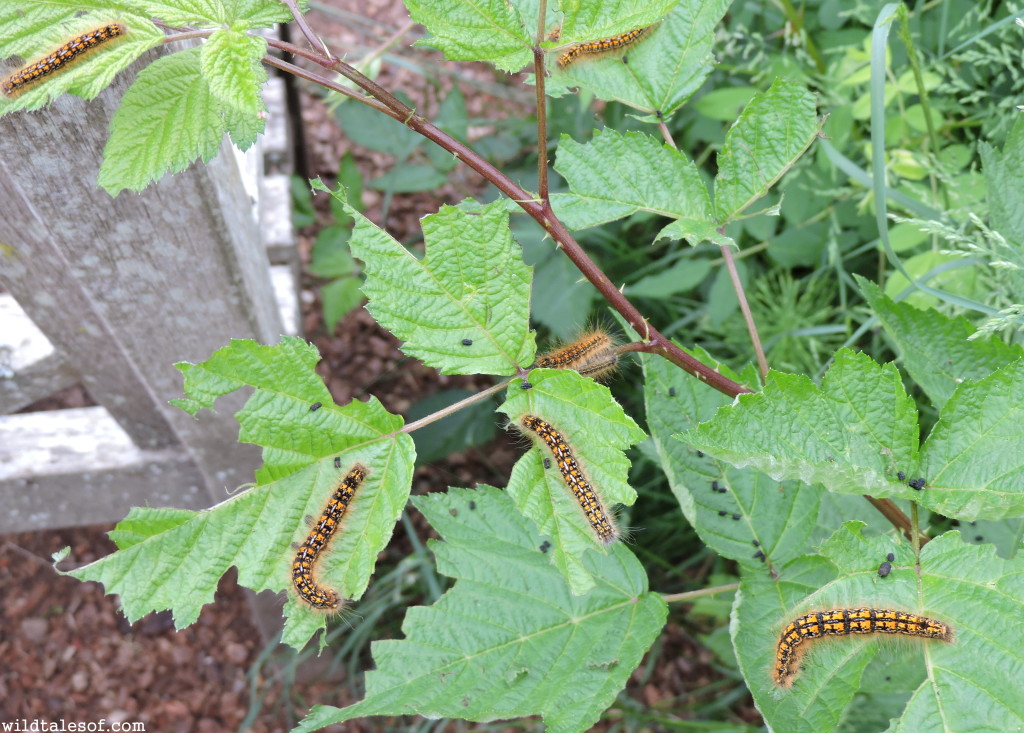
2. Enjoy a destination.
Choose a destination (waterfall, creek, bridge, interesting tree, lake) and involve your preschooler in the mission to get there. Talk about what you’ll see and do once you arrive, and on the way back reflect on the experience. On our last hike, in St. Edwards State Park, we stopped for a break once we reached Lake Washington. We collected rocks and shells, had snack & hot cocoa, and even drew letters in the sand.
3. Interact with other hikers.
This might just be the way my social little guy is, but Bergen enjoys chatting with fellow hikers as we cross paths. Friendly dogs are an instant ice breaker, and starting with, “What’s your dog’s name?” can be an easy opening line. Bergen also loves to ask about gear–hiking poles, hydration packs, and other interesting supplies can be fun to talk about!
4. Whistle with grass.
During one of our more challenging (not in terms of distance or difficulty, but attitude) hikes last spring, I’ll never forget when Slaed stopped on the side of the trail to teach Bergen to whistle with a blade of grass. That moment seemed to turn Bergen’s whining ways around, and we had a pleasant stroll back to the trailhead. I found this grass whistle tutorial for those of you who have yet to perfect the art (I sure haven’t)!
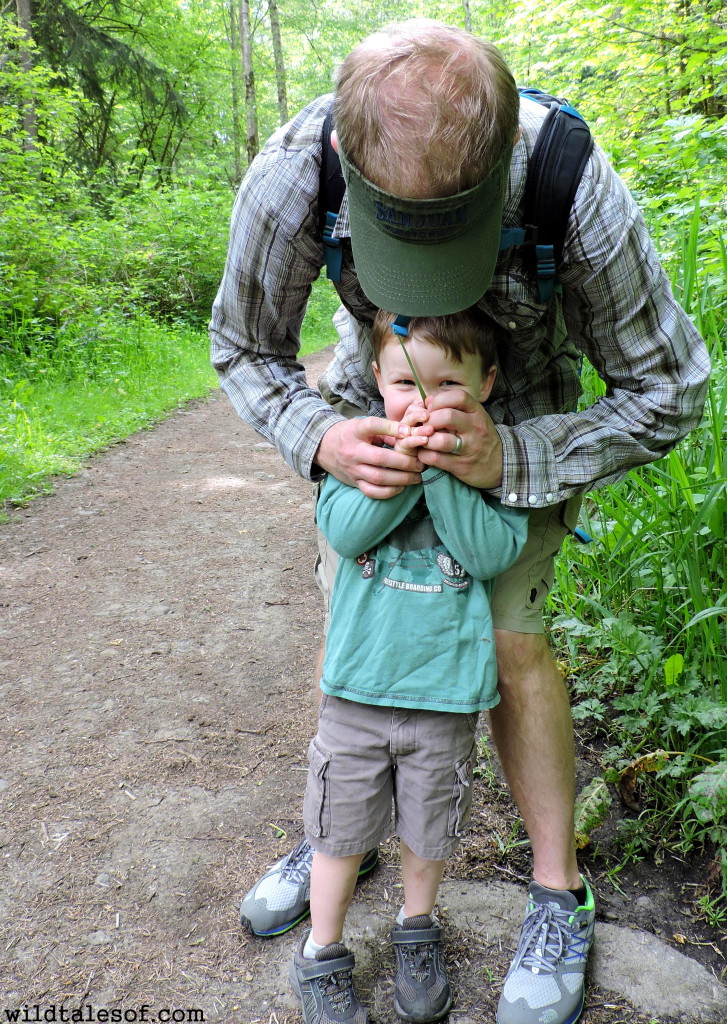
5. Letterbox.
Letterboxing, a cousin to geocaching, is an organized treasure hunt. Clues are posted (can be found online & sometimes by word of mouth) as directions to a box hidden in a publicly accessible area (parks, maintained trails, etc). Inside the box is a rubber stamp. If/when you find the box, you imprint the box’ stamp on your personal letterboxing log book, and leave an imprint of your own personal stamp in the letterbox’ log book. Letterboxing turns our hikes into missions!
6. Be a noticer.
Being a “noticer” is Bergen’s latest take-away from attending forest preschool. We’ve had so much fun with it! You can be a noticer on your own or with a tool like a magnifying glass or homemade “noticer” (tutorial coming soon) made of a paper plate with a whole cut out (making a circular frame) with a stick attached. As you hike, hone in on areas along the trail that are of interest. Get close to the trunk of a tree, and see what you notice–use your senses!
7. Identify.
Bring a field guide book or fold-out that’s specific to your local region, and work to identify insects, spiders, trees, tracks, birds, and other living things.
8. Act out a story, nursery rhyme, or fairy tale.
So many familiar rhymes, stories, and tales take place in the outdoors. Almost every time we cross a bridge, we at least have to mention one of the lines in the 3 Billy Goats Gruff, and sometimes we act out the whole story! Cragmama has a list of nursery rhymes that are fun to sing and perform outside.
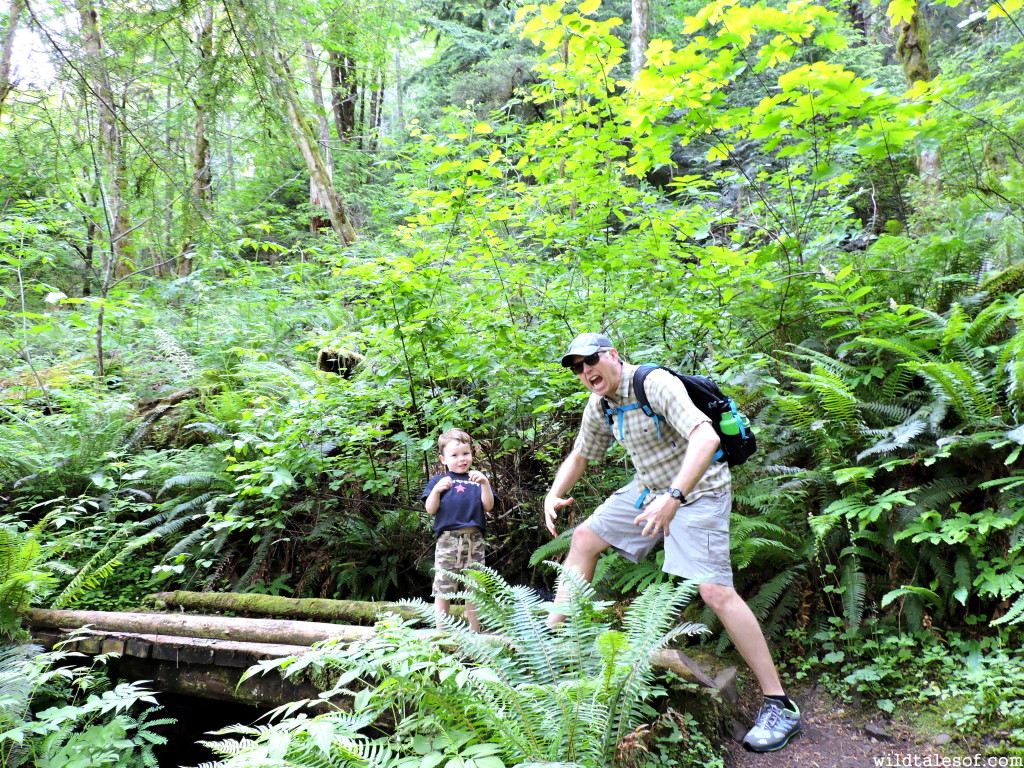
I’m sure there are SO MANY more things you could add this short list! Share your ideas! You might also find our ideas for transition from being carried to hiking independently helpful.
Come join the conversation! You can keep up to date with each and every post by subscribing to the blog via email. We’d also love to have you join us on all of our adventures by “liking” our facebook page and following us on twitter! If you enjoyed this post, please “like it”, “tweet it” or “pin it”!
 Healthy Breakfast for Adventure Families: Apple Carrot Squash Muffins
Healthy Breakfast for Adventure Families: Apple Carrot Squash Muffins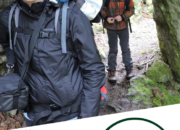 Outdoor Mom Academy: Take Your Family’s Outdoor Adventures to the Next Level
Outdoor Mom Academy: Take Your Family’s Outdoor Adventures to the Next Level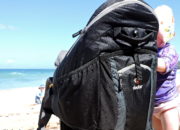 Deuter Kid Comfort 3 Kid Carrier Review
Deuter Kid Comfort 3 Kid Carrier Review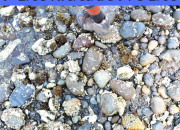 Women’s Hiking Boot Review: V-Lite Altitude Pro Lite from Hi-Tec
Women’s Hiking Boot Review: V-Lite Altitude Pro Lite from Hi-Tec
I pinned this because it has so many awesome things to do! I love the whistling with grass and acting out fairy tales. I think Z would absolutely love it! Great post Kate!